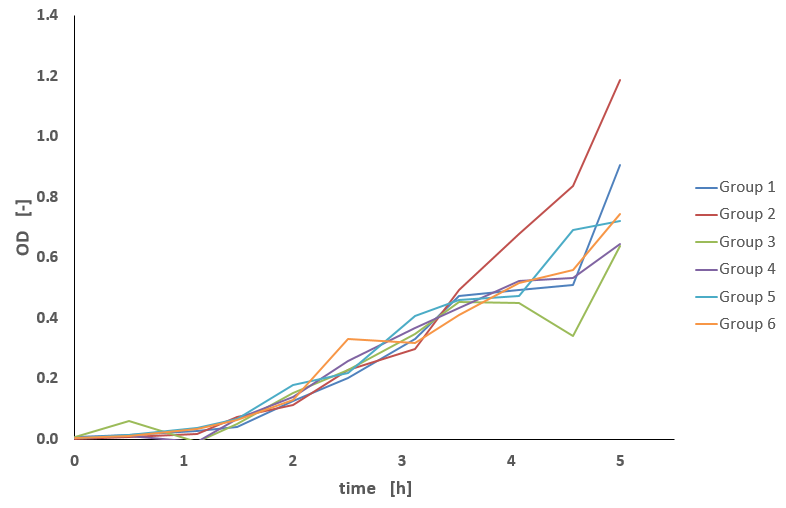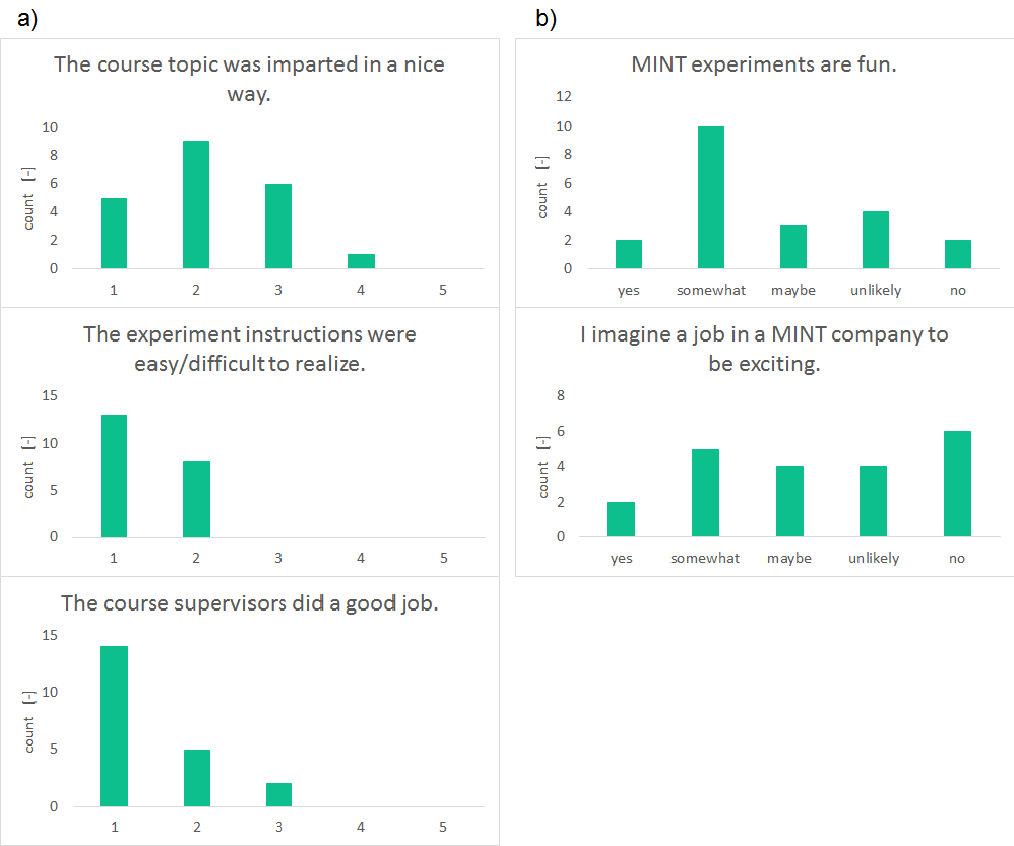Team:Aachen/Collaborations/Neanderlab
From 2014.igem.org
AZimmermann (Talk | contribs) (→School Project at the NEAnderLab) |
AZimmermann (Talk | contribs) (→School Project at the NEAnderLab) |
||
| Line 6: | Line 6: | ||
The students carried out multiple experiments in context of our iGEM project. During the day, the students collected samples from an ''E.coli'' TB culture every 30 minutes to observe the exponential growth phase. Optical density was measured with our own DIY photometer. Overall, the students did a good job of treating their bacterial culture well, as shown in the graph below. | The students carried out multiple experiments in context of our iGEM project. During the day, the students collected samples from an ''E.coli'' TB culture every 30 minutes to observe the exponential growth phase. Optical density was measured with our own DIY photometer. Overall, the students did a good job of treating their bacterial culture well, as shown in the graph below. | ||
| - | + | <center> | |
{{Team:Aachen/Figure|Aachen_14-09-24_Neanderlab_curves.png|align=center|title=Growth profiles of ''E. coli''|subtitle=Optical density of the cultures measured by the students|width=700px}} | {{Team:Aachen/Figure|Aachen_14-09-24_Neanderlab_curves.png|align=center|title=Growth profiles of ''E. coli''|subtitle=Optical density of the cultures measured by the students|width=700px}} | ||
| - | + | </center> | |
In between the growth curve measurements, we introduced the students to the iGEM competition and synthetic biology. Of course, our team members also explained the bacterial growth properties and how we can observe the propagation of cells using the photometer. After the sudden fire alarm and evacuation of the building, the rest of the day dealt with different types of "glowing" in nature, including bioluminescence, fluorescence and phosphorescence. We started by explaining the mechanism behind bioluminescence in the context of quorum sensing of ''Vibrio fischeri'' in squid. As another example of glowing organisms we chose ''Pseudomonas fluorescens''. Students plated ''Pseudomonas fluorescens'' onto Pseudomonas-F agar plates containing different concentrations of iron. These type of bacteria produce fluorescing siderophores when iron concentrations are low. After an incubation period of 1 to 2 days, the students should be able to see nice results in form of fluorescing and non-fluorescing bacterial colonies on their plates. | In between the growth curve measurements, we introduced the students to the iGEM competition and synthetic biology. Of course, our team members also explained the bacterial growth properties and how we can observe the propagation of cells using the photometer. After the sudden fire alarm and evacuation of the building, the rest of the day dealt with different types of "glowing" in nature, including bioluminescence, fluorescence and phosphorescence. We started by explaining the mechanism behind bioluminescence in the context of quorum sensing of ''Vibrio fischeri'' in squid. As another example of glowing organisms we chose ''Pseudomonas fluorescens''. Students plated ''Pseudomonas fluorescens'' onto Pseudomonas-F agar plates containing different concentrations of iron. These type of bacteria produce fluorescing siderophores when iron concentrations are low. After an incubation period of 1 to 2 days, the students should be able to see nice results in form of fluorescing and non-fluorescing bacterial colonies on their plates. | ||
| Line 16: | Line 16: | ||
<center> | <center> | ||
| - | {{Team:Aachen/Figure|Aachen 14-09-27 Neanderlab Evaluation Diagrams.png|title=Summary of the students' evaluation of their experience with us in the NEAnderLab.|subtitle=a) Questions on how students liked the program (1=very good, 5=poor); b) General questions about MINT (mathematics-informatics-natural sciences-technology) subjects|width=800px}} | + | {{Team:Aachen/Figure|Aachen 14-09-27 Neanderlab Evaluation Diagrams.png|align=center|title=Summary of the students' evaluation of their experience with us in the NEAnderLab.|subtitle=a) Questions on how students liked the program (1=very good, 5=poor); b) General questions about MINT (mathematics-informatics-natural sciences-technology) subjects|width=800px}} |
</center> | </center> | ||
{{Team:Aachen/Footer}} | {{Team:Aachen/Footer}} | ||
Revision as of 09:21, 12 October 2014
|
 "
"

